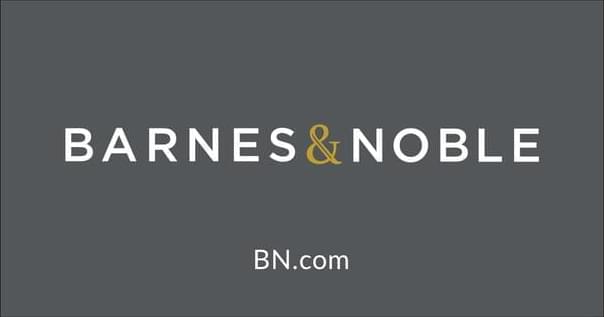Enjoy the videos and music you love, upload original content, and share it all with friends, family, and the world on YouTube.
Category: media & arts – Page 40
Kynurenine/Tryptophan Is Associated With Biomarkers Of Neurodegenerative Disease
Enjoy the videos and music you love, upload original content, and share it all with friends, family, and the world on YouTube.
Battlefleets: In the future, fleets of unimaginable scope may battle over light years, in conflicts that might last milliseconds or entire centuries
Watch my exclusive video Jupiter Brains \& Mega Minds: https://nebula.tv/videos/isaacarthur–…
Get Nebula using my link for 40% off an annual subscription: https://go.nebula.tv/isaacarthur.
Get a Lifetime Membership to Nebula for only $300: https://go.nebula.tv/lifetime?ref=isa…
Use the link gift.nebula.tv/isaacarthur to give a year of Nebula to a friend for just $30.
Visit our Website: http://www.isaacarthur.net.
Join Nebula: https://go.nebula.tv/isaacarthur.
Support us on Patreon: / isaacarthur.
Support us on Subscribestar: https://www.subscribestar.com/isaac-a…
Facebook Group: / 1583992725237264
Reddit: / isaacarthur.
Twitter: / isaac_a_arthur on Twitter and RT our future content.
SFIA Discord Server: / discord.
Credits:
Battlefleets.
Episode 461; August 22, 2024
Produced, Written \& Narrated by: Isaac Arthur.
Editor: Thomas Owens.
Graphics:
Darth Biomech.
Jeremy Jozwik.
Legiontech Studios.
Sergio Botero.
Select imagery/video supplied by Getty Images.
Music Courtesy of Epidemic Sound http://epidemicsound.com/creator.
Stellardrone, \
Roko’s Basilisk: Dangerous Knowledge & All-Powerful AI
Isaac arthur rokos basilisk.
The dangers of artificial intelligence have long loomed in our future, and seem ever closer. But it may be that the dangers of the future can reach back into the past itself, and even without a time machine.
Go to https://brilliant.org/IsaacArthur/ to get a 30-day free trial and 20% off their annual subscription.
Join this channel to get access to perks:
/ @isaacarthursfia.
Visit our Website: http://www.isaacarthur.net.
Join Nebula: https://go.nebula.tv/isaacarthur.
Support us on Patreon: / isaacarthur.
Support us on Subscribestar: https://www.subscribestar.com/isaac-a…
Facebook Group: / 1583992725237264
Reddit: / isaacarthur.
Twitter: / isaac_a_arthur on Twitter and RT our future content.
SFIA Discord Server: / discord.
Credits:
Are we living in a simulation? | Sean Carroll and Lex Fridman
Enjoy the videos and music you love, upload original content, and share it all with friends, family, and the world on YouTube.
Towards a Complexity Theory for Fully Quantum Problems — Henry Yuen
Enjoy the videos and music you love, upload original content, and share it all with friends, family, and the world on YouTube.
China’s new humanoid robot does it all — from Kung Fu to cooking
Designed to mimic human decision-making and physical interaction, the Astribot S1 robot can handle tasks that would traditionally require human dexterity and judgment.
Launched by Stardust Intelligence, a Chinese company, the robot has a human-like upper body structure mounted on a wheeled base.
During its first technical demonstration, the robot was seen folding clothes, sorting items, flipping pans while cooking, vacuuming, and cup stacking, attracting widespread attention in the industry.
Presented in a complete form in a new video, the robot is seen accurately serving tea in a cup. If you are feeling sad and want to listen to any music, the innovative machine can play musical instruments as well.

Your Memories Are Like Paintings
Our brains constantly retouch the past with the colors of the present, putting a fresh version of ourselves on display.
Our brains are not designed to give us the entirety of reality.
Remembering is dominated by the perspective we have in the moment.
Insights in 2023’s Why We Remember by Charan…
Understanding that memories are interpretations can transform you.
High Mushroom Intake, High Homocysteine?
Enjoy the videos and music you love, upload original content, and share it all with friends, family, and the world on YouTube.

Online Bookstore: Books, NOOK ebooks, Music, Movies & Toys
This just in!
Barnes & Noble has over 600 stores throughout the United States. Find a bookstore near you using our store locator. You can also find information on curbside pickup, store events (and virtual events), store hours, Barnes & Noble Café menus and more.
eBooks Delivered Straight to your NOOK Device or Mobile NOOK App.
Reading on the go has never been easier with our convenient NOOK eReaders and tablets. Download eBooks and read them on our free NOOK app for both Apple and Android devices. Browse millions of titles to read anywhere, anytime. Shop eBooks on a budget in our eBooks Under $2.99 collection or current best sellers in our Top 100 eBooks collection. We also have a large selection of books by indie authors. Buy the NOOK GlowLight 4 for seamless day-to-night reading, or the latest NOOK tablet for endless options at your fingertips.